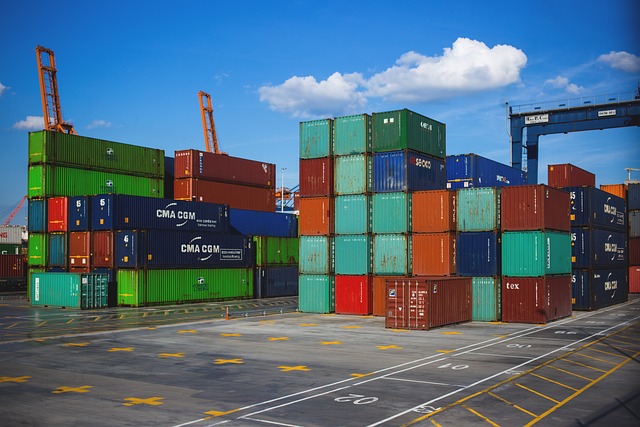In the competitive landscape of industrial property lending in Colorado, continuous support is a strategic advantage. Effective communication through regular meetings, shared documents, and tailored updates aligns stakeholders and facilitates prompt problem-solving. Building trust through transparency and reliability fosters strong borrower-lender relationships. Leveraging Key Performance Indicators (KPIs) provides insights into project health and market demand, enabling informed decision-making. Ongoing support, demonstrated through successful case studies, differentiates lenders and contributes to the overall resilience of Colorado's industrial property market.
In the dynamic landscape of industrial property lending Colorado, ongoing support is paramount for project success. This article explores the critical role continuous support plays in navigating complex industrial projects. We delve into effective communication strategies, foster trust through transparency, and highlight key performance indicators for monitoring progress. Through case studies, we showcase successful ongoing support in industrial property loans Colorado, providing valuable insights for lenders aiming to excel in this domain.
- Understanding the Importance of Continuous Support in Industrial Property Lending Colorado
- Strategies for Effective Communication During Project Implementation
- Building Trust and Transparency with Borrowers and Stakeholders
- Key Performance Indicators to Monitor Project Progress
- Case Studies: Successful Ongoing Support in Industrial Property Loans Colorado
Understanding the Importance of Continuous Support in Industrial Property Lending Colorado

In the competitive landscape of industrial property lending Colorado, continuous support is not just a service—it’s a strategic necessity. Beyond the initial financing, understanding that businesses face evolving challenges and market dynamics requires ongoing assistance. This proactive approach ensures lenders remain integral partners in their borrower’s success stories, fostering long-term relationships built on trust and stability.
The significance of continuous support lies in its ability to mitigate risks, enhance operational efficiency, and provide timely solutions. By staying connected with their clients, lending institutions can swiftly address any issues that may arise, whether it’s facilitating adjustments to loan terms, offering financial advice, or simply providing a listening ear during turbulent times. This holistic approach not only strengthens the borrower-lender bond but also contributes to the overall health and resilience of Colorado’s industrial property market.
Strategies for Effective Communication During Project Implementation

Effective communication is vital for a successful project implementation, especially in the complex landscape of industrial property lending in Colorado. One key strategy is establishing clear and consistent channels of communication. This involves identifying all stakeholders involved, from borrowers to lenders, and setting up regular meetings or calls. Using collaborative tools like shared documents, project management software, and video conferencing platforms ensures everyone is on the same page, reducing miscommunication and delays.
Additionally, fostering an open and transparent environment encourages feedback and problem-solving. Regularly soliciting input from all parties can help identify potential issues early on, allowing for quicker resolution. Tailoring communication to different stakeholders’ needs—a personalized approach—is also essential. For instance, borrowers might prefer detailed updates about financial progress, while lenders may want broader overviews focusing on legal and regulatory aspects, aligning with the unique requirements of industrial property lending in Colorado’s dynamic market.
Building Trust and Transparency with Borrowers and Stakeholders

Building trust is paramount in the world of industrial property lending Colorado, where strong relationships are key to a successful project. Transparency fosters this trust by ensuring all stakeholders, including borrowers, have clear and consistent communication about the project’s progress and any potential risks or challenges. This open approach allows for early problem-solving, ensuring everyone is aligned towards the same goals.
By maintaining regular updates and being responsive to inquiries, lenders can create an environment of reliability and predictability. This is especially crucial in Colorado’s dynamic industrial market where timely decision-making and adaptability are essential. Borrowers and stakeholders who feel heard and respected are more likely to remain engaged and supportive throughout the project lifecycle.
Key Performance Indicators to Monitor Project Progress

In the realm of industrial property lending Colorado, effectively monitoring project progress requires a clear understanding of Key Performance Indicators (KPIs). These metrics are vital tools for assessing the health and trajectory of an industrial project, from initial development to ongoing operations. KPIs specific to industrial property in Colorado should focus on financial metrics like cash flow and return on investment, alongside operational measures such as production efficiency and occupancy rates.
For instance, tracking occupancy rates can reveal the market demand for industrial spaces in Colorado, while production efficiency metrics help gauge the effectiveness of the project’s operational strategies. Additionally, monitoring construction milestones and cost overruns is essential to ensure projects stay on schedule and within budget. These KPIs empower lenders and stakeholders with actionable insights, enabling them to make informed decisions and navigate the dynamic landscape of industrial property investments in Colorado.
Case Studies: Successful Ongoing Support in Industrial Property Loans Colorado

In the dynamic landscape of industrial property lending Colorado, ongoing support has emerged as a game-changer for both lenders and borrowers. Case studies highlight successful implementations where continuous assistance throughout the loan lifecycle has led to robust outcomes. One such example involves a major financial institution that partnered with a diverse range of stakeholders to provide tailored solutions for industrial property owners. By offering proactive guidance on cash flow management, regulatory compliance, and market trends, they ensured borrowers could navigate challenges and capitalize on opportunities.
This collaborative approach resulted in improved loan performance and increased client satisfaction. The study demonstrates the value of ongoing support in fostering long-term relationships and driving sustainable growth in the industrial property lending sector Colorado. Through regular communication, comprehensive risk assessment, and access to market insights, lenders can effectively contribute to the success of their borrowers, creating a harmonious and prosperous tapestry for all involved.
In the dynamic landscape of industrial property lending in Colorado, ongoing support is not just an option—it’s a competitive advantage. By implementing effective communication strategies, fostering trust and transparency, and leveraging key performance indicators, lenders can ensure project success and build strong relationships with borrowers and stakeholders. The case studies presented highlight how this approach translates into tangible benefits, demonstrating the value of continuous support in the Colorado industrial property lending market.
